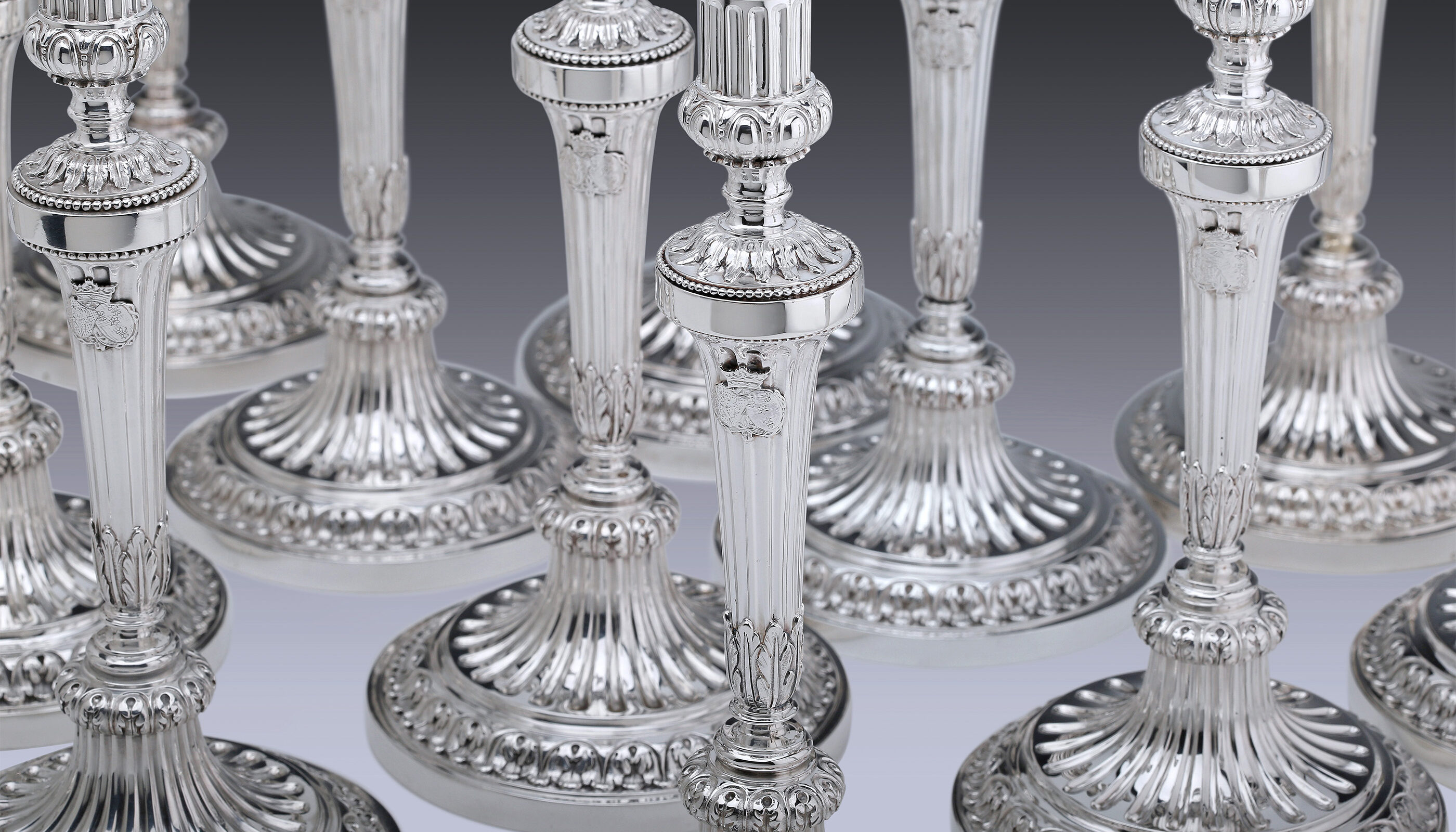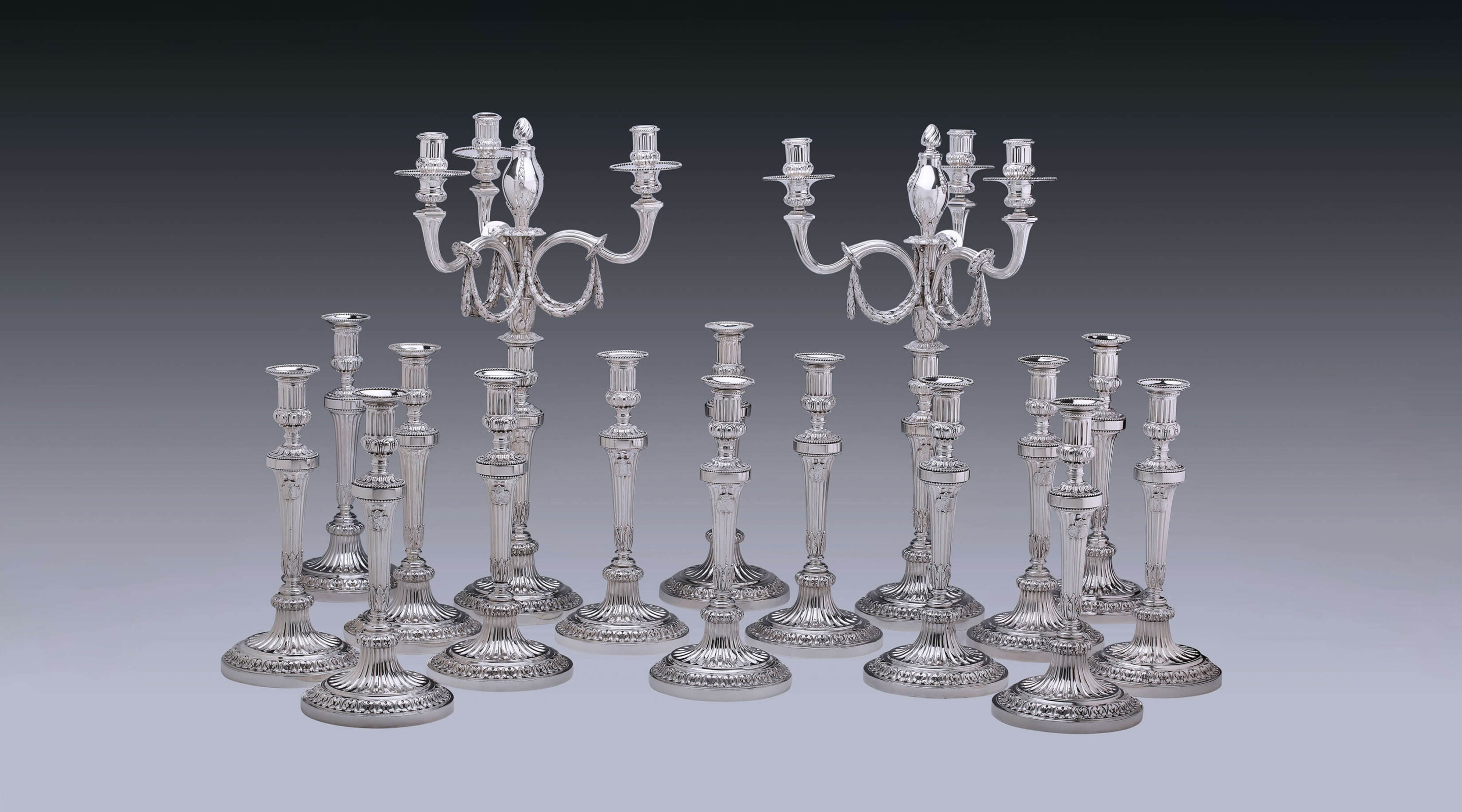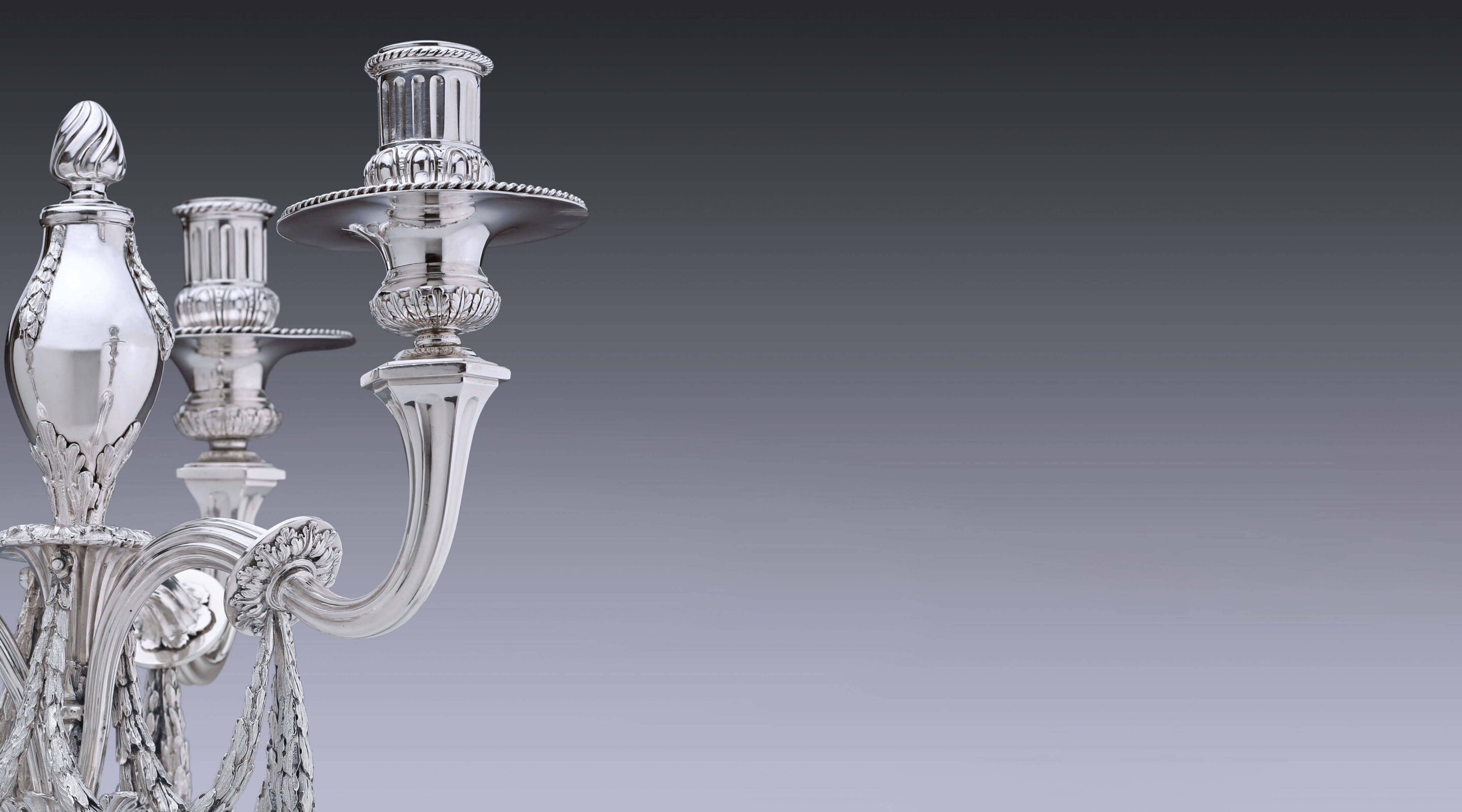This impressively large set includes no fewer than sixteen candlesticks with two three-armed branches or candelabras. A set of this size and quality, weighing almost 14 kilograms, was an extraordinary possession even at the end of the eighteenth century. Sets like this have often been melted down or split up through inheritance, which is why these ensembles are now virtually unknown. This set was made in the period when the Classical style, also known as the Louis XVIth style, was in fashion. The candlesticks have elegantly stylized stems that look like fluted columns, decorated with typical Classical ornaments like acanthus leaves, beaded edges and garlands.
The Lewe – Alberda Candlesticks
The round foot of the candlesticks stands on a vertical and completely plain plinth with a moulded border above, consisting of finely detailed acanthus leaves. These foliar motifs recur on the raised part of the foot below the tapering stem and on the nodule. There is vertical fluting over the foot, the stem and the candleholder. The plain nodule is finished with a beaded rim.
The two branches have gracefully curved and fluted arms with rosettes of acanthus leaves halfway along. To these are attached heavy cast garlands with a foliar motif. In the centre is a vase with detachable flame finial, decorated with acanthus leaves and garlands.
Set
Dirk Evert Grave made these sixteen candlesticks in 1785, 1786 and 1787. The two branches were included in the initial order in 1785. Twelve of them have a silver coat of arms. The owners apparently enlarged the set in these consecutive years and places additional orders with the silversmith.
None of them as big as this one
Only three times before in the 53-year existence of our firm have we had such a large set in our collection, however none of these sets was as big as this one. They were a Hague set of twelve candlesticks with branches in the Rococo style by Jan Willem Burger, an Amsterdam set of eight candlesticks with branches in the Neoclassical style – made, like this set, by Dirk Evert Grave in 1777, for which the branches were made by Hendrik Cristoph Nicolaas Wiedeman in 1779 – and a set of twelve candlesticks by Anton Hinrich Pape, Amsterdam, of 1803.
Fellow Silversmiths
Silversmiths in The Hague dominated in the Louis XV style, in Neoclassicism it was those in Amsterdam who led the way. This extremely elegant model, with the dimensions and ornamentation in perfect balance, was very much in fashion at this time. Stedelijk Museum De Lakenhal has a set of six similar candlesticks dating from 1788, likewise by Dirk Evert Grave.
Grave was not the only one to make this model of candlestick, however, his fellow silversmiths in Amsterdam, Hendrik Christoph Nicolaas Wiedeman and Anton Hinrich Pape, did so too. In 1783-84, for instance, Wiedeman made a set of eight candlesticks of a similar model with branches on each one. It is now in the collection of Het Loo Palace in Apeldoorn.
A very similar set of six, likewise by Wiedeman, is in Middachten Castle in Steeg in Gelderland. These two sets can be traced back to the sisters Hester and Adriana Clifford, who may each have inherited a set from their mother upon her death in 1795.
They were certainly aware of one another's work
The three silversmiths were certainly aware of one another’s work and in fact worked together, as we see in the set of eight candlesticks which we had in our collection earlier, as mentioned above, that were made by Grave with branches by Wiedeman in 1779. There is also a set of six candlesticks made by A.H. Pape in 1789, with accompanying branches made by Dirk Evert Grave. These silversmiths may also have worked for the same shopkeeper who retailed gold and silver objects. Although the composition and ornamentation are identical, there are differences in their execution. It is essential with candlesticks from this period that the proportions and ornamentation used are in perfect balance. Comparing this series with similar candlesticks in this style, it is immediately apparent that even very small variations can make a big difference and that this is clearly the most elegant version.
Lewe and Alberda Arms
The silver coat of arms on this set were carried by Gerhard Lewe and Josine Petronella Alberda van Vennebroek, both of Groningen. Gerhard Lewe, born in Brabant in 1751, was the son of Edzard Willem Lewe and Margaretha Josina Alberda. On 30 April 1775, at the age of twenty-three, he married Josina Petronella Alberda (1751-1828), the daughter of Unico Evert Alberda, Lord of Vennebroek and Nijenstein. Gerhard Lewe is registered as a member of the administration of the Ommelanden in 1781. In 1805 his wife, Josina, bought Nijenstein Castle near Zandeweer, a property that had previously belonged to her father.
Dirk Evert Grave
Dirk Evert Grave was the son of the clog-maker Jan Evert Grave and his wife Anna Maria Vorkenbrink. He was baptised on 13 February 1735. In 1763 Dirk Grave was registered as a burgher of the city of Amsterdam. By 1765 he was a master silversmith. Grave married Gezina Mey in 1775 and the couple had one daughter, Hanna Elisabeth, who married the silversmith Nathanael Teuter in 1806. Dirk Evert Grave died in 1795 in his house in Kalverstraat, between Gaapersteeg and Duyfjessteeg, which he had bought in 1782. Grave must have been active as a shopkeeper from 1789 onwards and his business certainly had a workshop connected to it. After his death, this productive silversmith’s workshop was continued by his widow and then by his son-in-law, Nathanael Teuter.
Marked with the Amsterdam assay mark, the Dutch Lion, the date letters A, B and C for 1785, -86 and -87 and the maker’s mark an anvil for Dirk Evert Grave.

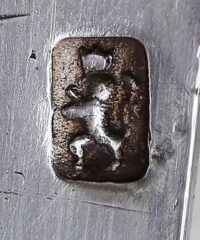
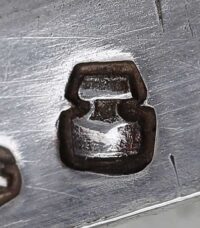
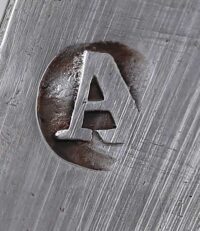


This site is protected by reCAPTCHA and the Google Privacy Policy and Terms of Service apply.
